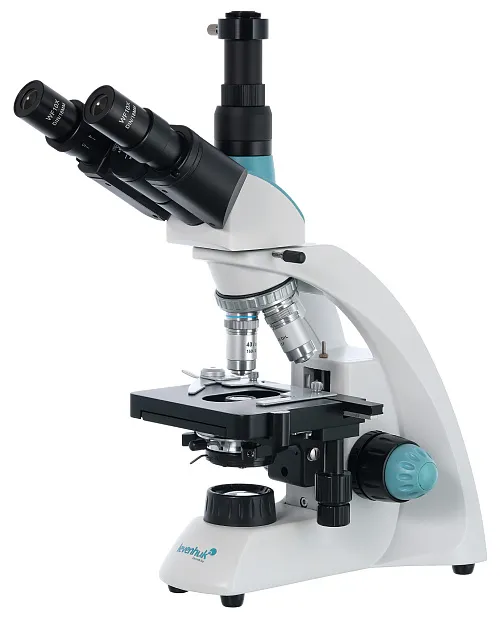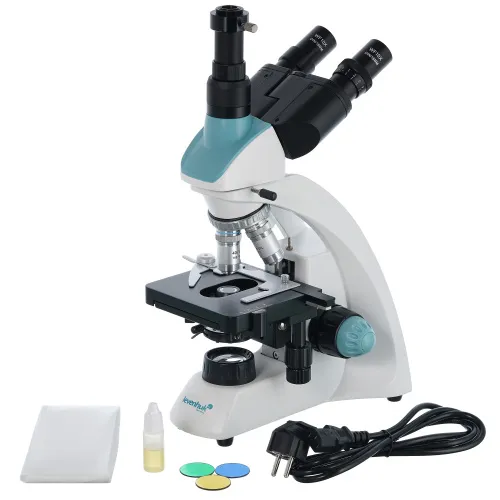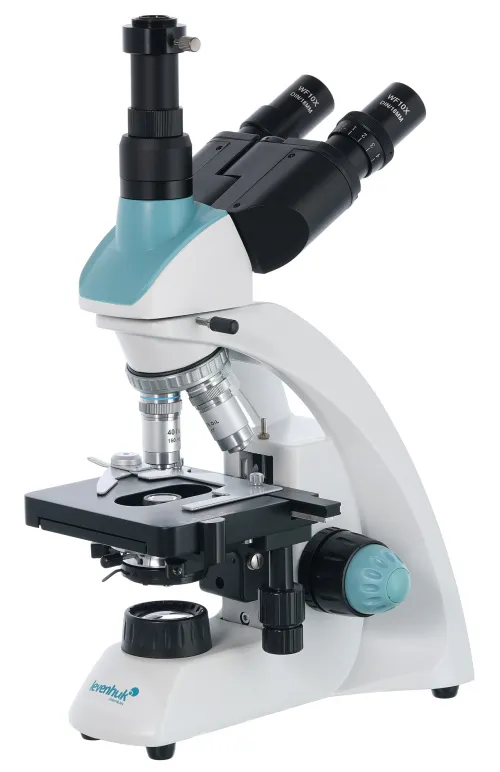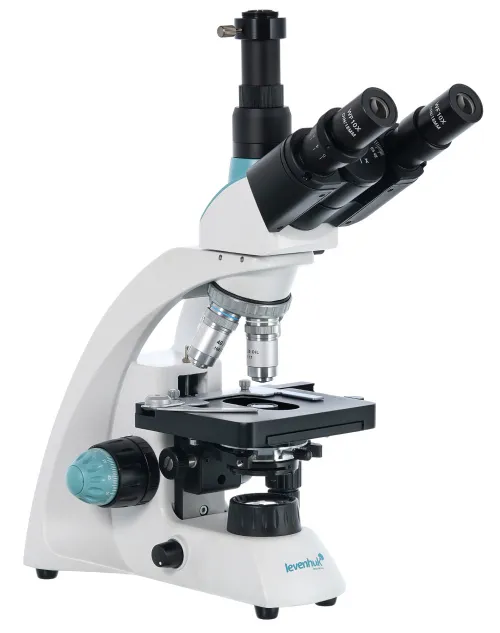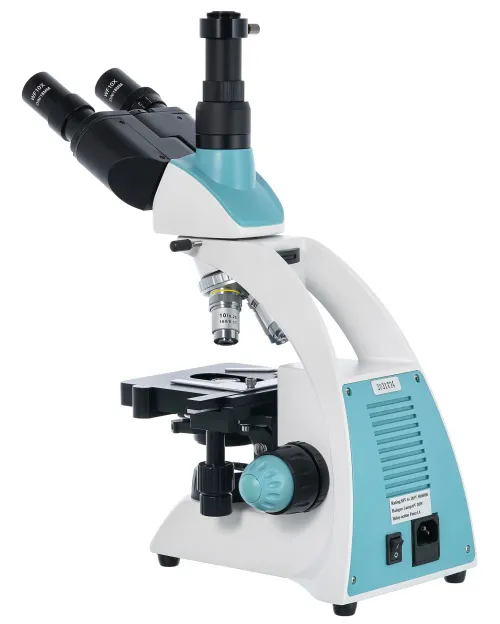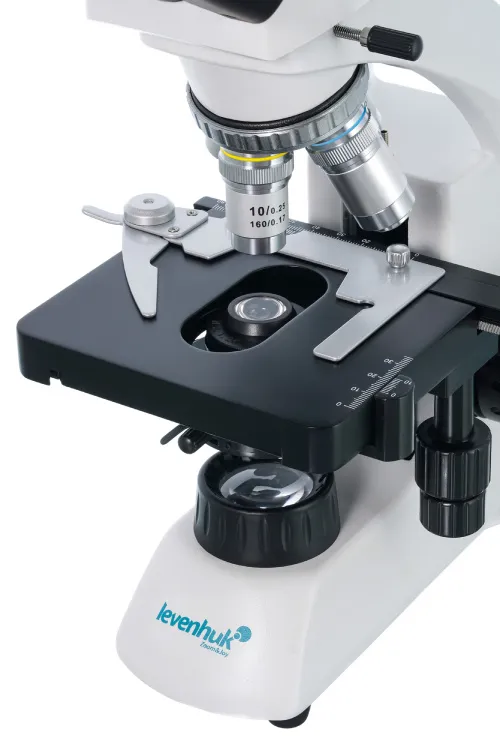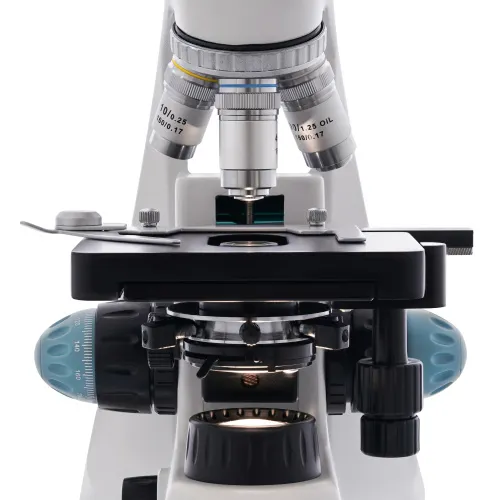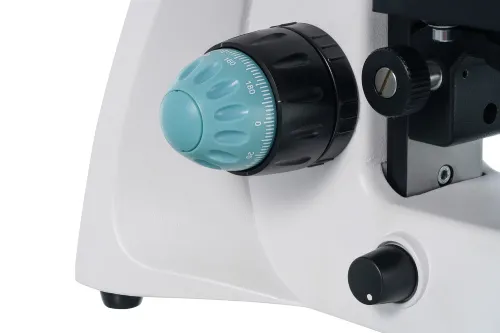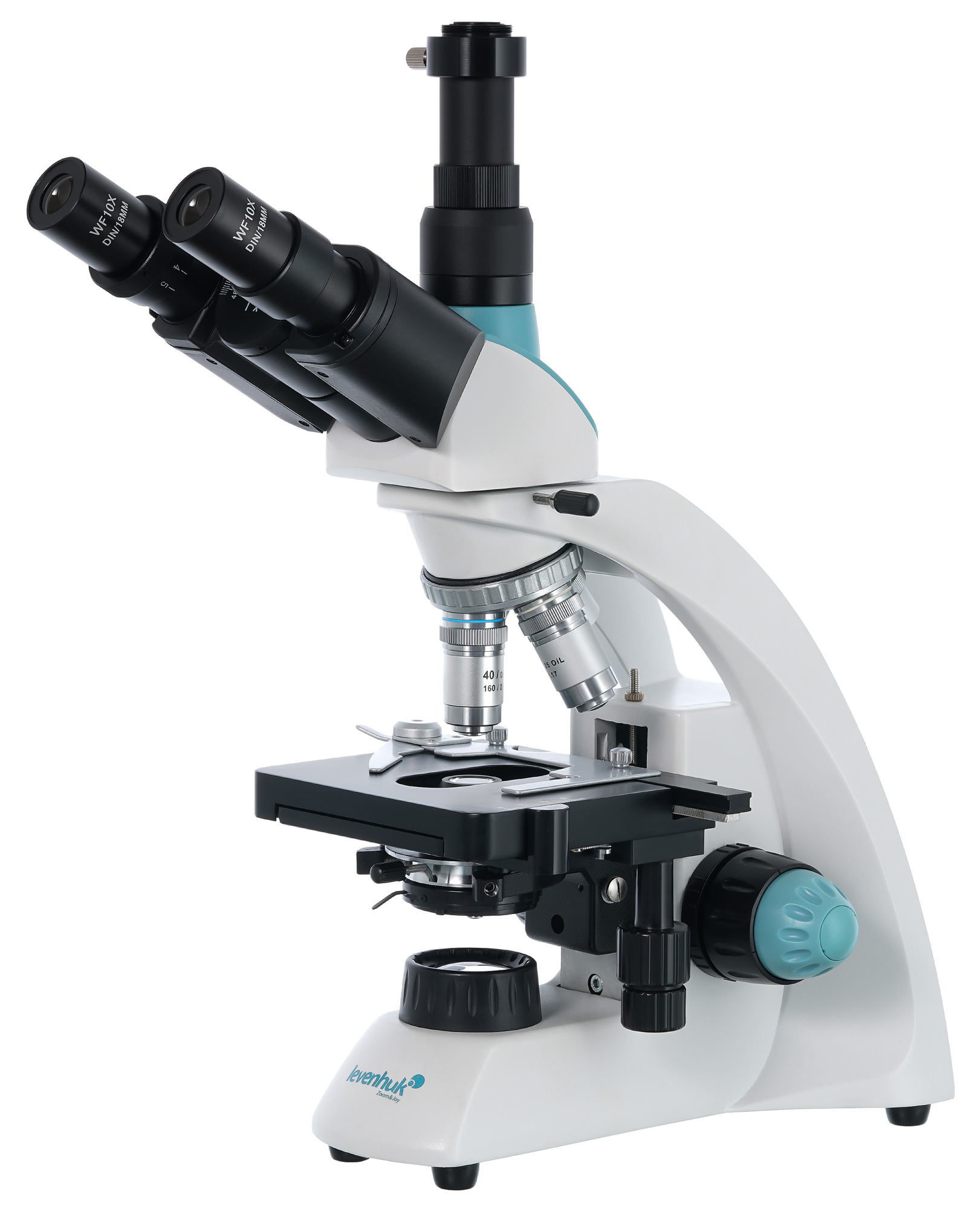Levenhuk 500T Trinocular Microscope
Magnification: 40–1000x. Trinocular head, achromatic objectives, halogen light with a collector
| Product ID | 75426 |
| Brand | Levenhuk, Inc., USA |
| Warranty | lifetime |
| EAN | 5905555005317 |
| Package size (LxWxH) | 41x32x26 cm |
| Shipping Weight | 5.12 kg |
Levenhuk 500T is a trinocular laboratory microscope with a magnification range from 40x to 1000x. It is equipped with the wide-field achromatic optics, which deliver clear and sharp images. Since halogen light is used as illumination, the image looks true-to-life, and all of the colors and details of the samples seem crisp and clear. The microscope is a true treasure for working in a research laboratory, medical center, or veterinary office.
The head consists of an inclined visual unit and a vertical tube for installing a digital camera in it (not included). The head can be rotated 360°. The kit includes two wide-field eyepieces and four achromatic objectives with various magnification. The sharpness of the optics is adjusted using coarse and fine focusing knobs located on the base of the microscope. This microscope is designed for bright field observations. A 100x objective can be used for observations using the oil immersion method. To protect the front lens, the 40x and 100x objectives are equipped with spring-loaded frames.
A mechanical scale is installed on the stage: it helps you quickly place the sample exactly under the objective. Under the stage, there is a bright field Abbe condenser with adjustable height. There is an iris diaphragm and filter holder. The lighting system consists of a halogen bulb with a collector. The powerful bulb provides uniform and bright lighting of the working area. The light brightness is adjustable. AC power is used for the power supply.
Features:
- Trinocular rotatable head with a tube for installing a digital camera
- Wide-field achromatic optics with a 40–1000x magnification range
- Halogen lighting with a collector, brightness adjustment, an AC power supply
- Condenser with an iris diaphragm, with adjustable height
- Coarse and fine focusing, metal body
- Slot for installing an analyzer (an analyzer is not included)
The kit includes:
- Microscope
- 4x, 10x, 40xs, 100xs (oil) achromatic objectives
- WF10x/18mm eyepieces (2 pcs)
- Abbe condenser N.A. 1.25 with an iris diaphragm and a filter holder
- Filters: blue, green, yellow
- Fuse
- C-mount
- Bottle of immersion oil
- Power cord
- Dust cover
- User manual and lifetime warranty
| Product ID | 75426 |
| Brand | Levenhuk, Inc., USA |
| Warranty | lifetime |
| EAN | 5905555005317 |
| Package size (LxWxH) | 41x32x26 cm |
| Shipping Weight | 5.12 kg |
| Type | biological, light/optical |
| Microscope head type | trinocular |
| Optics material | optical glass |
| Head | 360 ° rotatable |
| Head inclination angle | 30 ° |
| Magnification, x | 40 — 1000 |
| Eyepiece tube diameter, mm | 23.2 |
| Eyepieces | WF10x/18mm (2 pcs.) |
| Objectives | achromatic: 4x, 10x, 40xs, 100xs (oil immersion) |
| Revolving nosepiece | for 4 objectives |
| Interpupillary distance, mm | 48 — 75 |
| Stage, mm | 115x125 |
| Stage moving range, mm | 70/30 |
| Stage features | mechanical double-layer |
| Eyepiece diopter adjustment, diopters | ±5 |
| Condenser | Abbe condenser N.A. 1.25 with an iris diaphragm and filter holder, with adjustable height |
| Diaphragm | iris |
| Focus | coaxial, coarse (16mm) and fine (0.002mm) |
| Body | metal |
| Illumination | halogen |
| Brightness adjustment | ✓ |
| Power supply | 110–220V |
| Light source type | with a collector, halogen 12V/20W |
| Light filters | blue, green, yellow |
| Ability to connect additional equipment | a slot for installing an analyzer (an analyzer is not included) |
| User level | experienced users |
| Assembly and installation difficulty level | easy |
| Application | laboratory/medical |
| Illumination location | lower |
| Research method | bright field |
| Pouch/case/bag in set | dust cover |
We have gathered answers to the most frequently asked questions to help you sort things out
Find out why studying eyes under a microscope is entertaining; how insects’ and arachnids’ eyes differ and what the best way is to observe such an interesting specimen
Read this review to learn how to observe human hair, what different hair looks like under a microscope and what magnification is required for observations
Learn what a numerical aperture is and how to choose a suitable objective lens for your microscope here
Learn what a spider looks like under microscope, when the best time is to take photos of it, how to study it properly at magnification and more interesting facts about observing insects and arachnids
This review for beginner explorers of the micro world introduces you to the optical, illuminating and mechanical parts of a microscope and their functions
Short article about Paramecium caudatum - a microorganism that is interesting to observe through any microscope

